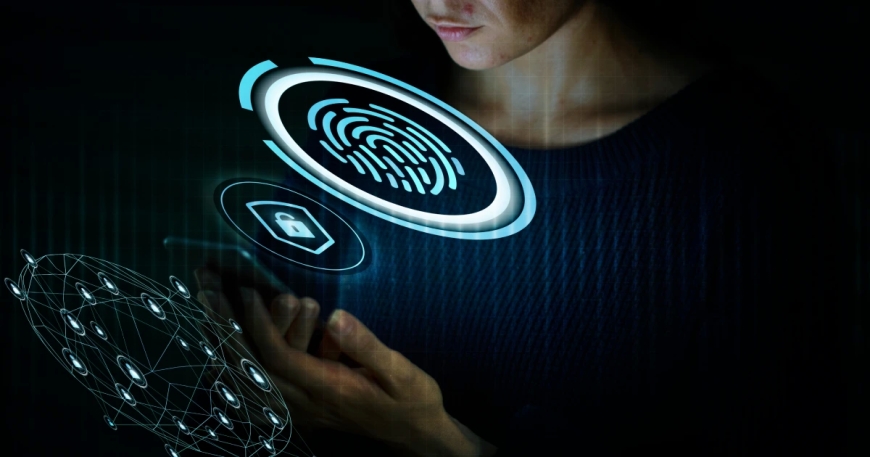The Future of Security: How Digital Identity Verification is Changing the Game
Discover how digital identity verification is revolutionizing online security, enhancing fraud prevention, and shaping the future of secure digital interactions.

In this increasingly connected world, digital identity verification is the linchpin of online security. Whether it is logging into a banking application, signing up for service, or verifying a user's identity during a Web-based transaction, the need has never been more critical for secure, reliable, and effective methods of identity verification.
As we journey towards a digital-first world, the verification of identities digitally stands tall for the protection of personal information and prevention of fraud, hence allowing secure access to online services.
But let's delve a little deeper into what digital identity verification really is, and how that changes the security landscape. Let's take a closer look into the future of security from the angle of digital identity verification.
Understanding Digital Identity Verification
Essentially, digital identity verification is the process of verifying an individual's or organization's identity in the virtual world. Other, more traditional and analogy proofs of identity include paper-based documentation and in-person verification, but digital identity verification occurs online.
It uses various means to verify that the identity of the person indeed corresponds to biometric scrutiny, such as fingerprints or face recognition; knowledge-based authentication/passwords/PINs; document verification, for instance, scanning government-issued IDs or a passport.
The demand to ensure that there is security regarding one's identity and also accuracy in verification calls has increased exponentially with the growing number of threats online. Digital verification of identity comes in important in the assessment of identity theft, fraud, unauthorized access to sensitive data, and thereby used as a critical tool in businesses and beyond.
The Rise of Digital Identity Verification
Traditionally, this verification of identity happened mostly in physical spaces: presenting a driver's license or passport in person. But with increased technological development, the needs also started emerging for digital ways of verification. From online banking and e-commerce websites to the latest Work From Home arrangements and virtual sessions with healthcare providers, there is an emerging need for digital identity verification that is necessary for secure online interactions.
Also Read: Digital Identity Verification: Use Cases, Benefits, Standards, and Their Regulatory Implications
Several factors have combined to bring about the increase in digital identity verification.
1.Rising Cyber Threats: The last decade has seen a tremendous surge in cybercrime. Lately, hackers have tried to hack online platforms to steal sensitive information. Therefore, people and businesses are trying to seek other ways in the name of security for their information.
2. Remote Work and Digital Transformation: The pandemic accelerated working from home, thus forcing businesses to undergo a digital transformation in order to verify their employees and clients. With more transactions and communications being held online, the need for security became even more urgent.
3.Regulations and Compliance: Governments across the world, seriously noticing the need for verification through secured means in the digital space, have enacted many regulations requiring businesses to use strong identity verification arrangements to comply with laws, such as, but not limited to, data protection laws-the GDPR in Europe-and Know Your Customer (KYC) regulations within the financial sector.
How Digital Identity Verification Is Revolutionizing Security
1.Biometric Authentication: Amongst today's developments in digital identity verification, biometric authentication is one of the largest. The identifiers-fingerprints, facial recognition, and iris scans-are specific to each person, hence making extremely good ways to confirm identity of any person. Biometric verification removes conventional passwords that can be easily stolen or forgotten.
In fact, one report by Juniper Research estimates that in 2024, 80% of all digital payment transactions worldwide will be protected with biometric authentication.
Biometric authentication is already rampant on smartphones and laptops and is even found in methods of payment, such as Apple Pay or Google Pay. The increased usage in online banking, health care, and government services accentuates even more the importance of keeping these digital identities secure.
2.Advanced AI and Machine Learning: Another pivotal role in digital identity verification is played by Artificial Intelligence and Machine Learning. The AI-driven system identifies large volumes of data, showing patterns and anomalies that raise red flags on security threats. For example, machine learning algorithms can spot unusual login behavior, such as logging in from a different geographic location or device, and trigger additional verification steps.
Besides, AI has been tuned furthermore for the increased accuracy of biometric identifications with cases of false positives and false negatives. For instance, AI-powered face recognition would be trained to recognize a user's face from different angles and different lighting conditions, further raising its reliability.
3.Blockchain Technology: Another hugely promising emerging technology supporting the move to digital identity verification is blockchain. By developing decentralized, immutable transaction records, blockchain will enable SENID to record stored data in a secure, transparent manner regarding identity verification. The use of blockchain reduces the risk of identity fraud and ensures users retain control of their personal information.
This means with blockchain, one could have a sort of 'digital' identity that would be verifiable across multiple platforms without necessarily having to provide sensitive information over and over. It could, therefore, be a big step toward reducing online fraud and making verification processes easier.
4. Multi-Factor Authentication (MFA): With the sophistication of cyber threats, one layer of security is just not enough. Multifactor authentication is turning out to be the gold standard for securing digital identity. MFA requires users to provide more than one piece of evidence-such as something they know, something they have, or something they are-to verify their identity.
MFA ensures a far greater level of difficulty for cybercriminals looking to gain unauthorized access to online accounts and systems because of the various ways of authentication. Already widely deployed across verticals such as banking, e-commerce, and cloud-based services, its growth will only continue to grow as more businesses recognize the need to give security pride of place.
5.Digital ID Wallets: Another great concept that is getting steam and momentum is that of a digital ID wallet, wherein a user can store and manage his or her identity credentials safely. These wallets may contain verified personal information, like government-issued IDs, health records, or professional certifications. The wallet will allow individuals to securely share their identity without necessarily exposing sensitive data to unauthorized parties.
Digital wallets will make it quick and safe to prove one's identity online when using various services, instead of manually entering the personal details every time. Wallets will provide a seamless, secure, easy-to-use way to manage identity.
The Future of Digital Identity Verification
The future is very bright for digital identity verification in the days to come. Technologies will advance further, making seamless and more secure processes for identity verification. The increasing trends of AI, biometrics, blockchain, and MFA will continue to drive security and user experience boundaries.
But with this improvement, a set of challenges also emerges: the concern for data privacy and dependence on the biometric system. This means any development in digital identity verification must be harnessed on core strong data privacy, transparency, and consent. Secondly, it will also involve the necessity of cooperation between governments and businesses in laying down universal standards and frameworks regarding digital identification to make sure that users' information would remain safe across all platforms and borders.
Conclusion
It's not a trend, it's the future in safeguarding personal information against fraud and ensuring secured access to online platforms. The need for identity verification has been upfront since cybersecurity threats have evolved and more services have gone digital. Among the key enabling technologies underpinning digital identity verification are biometrics, AI, blockchain, and multi-factor authentication, leading a revolution in authenticating our digital identities.
By embracing such innovations, businesses and people stay ahead of security threats and have seamless, secure online experiences. The future has arrived for security, and digital identity verification is at the forefront.
What's Your Reaction?














![Noots Focus Reviews [Truth Exposed 2025]!](https://news.bangboxonline.com/uploads/images/202501/image_430x256_678e3b94881a1.jpg)
![Vivalis Male Enhancement: The Must-Know Ingredients [2025 Update]](https://news.bangboxonline.com/uploads/images/202501/image_430x256_678e3b54e396c.jpg)









